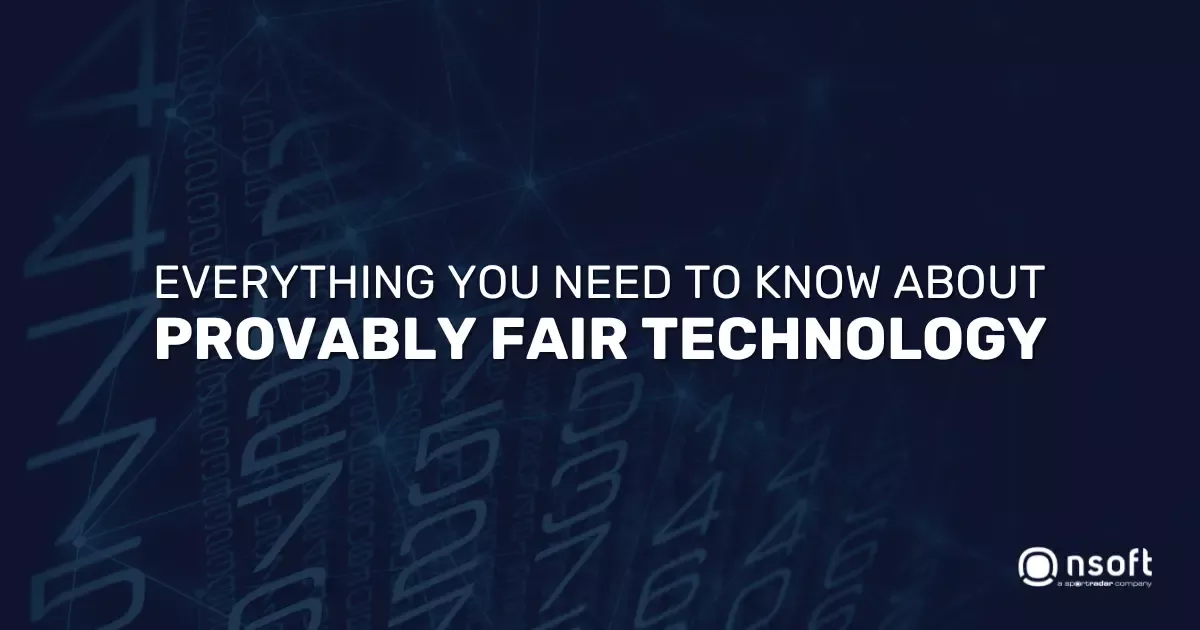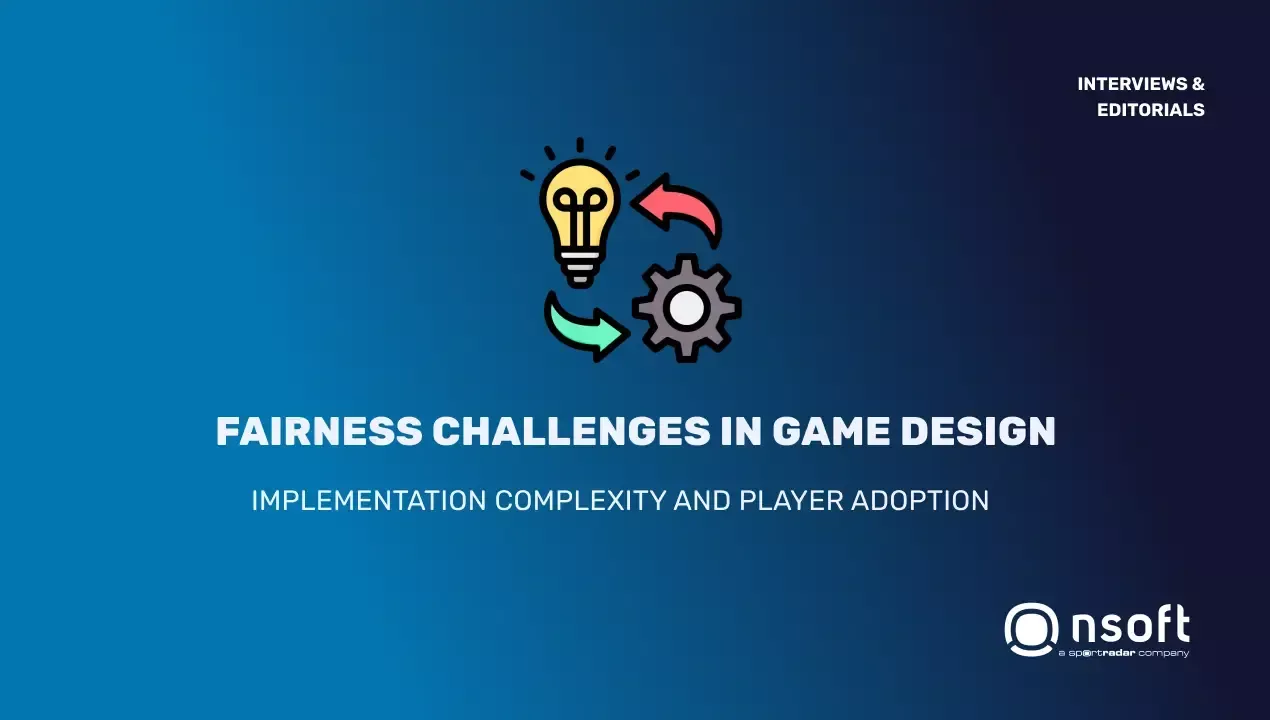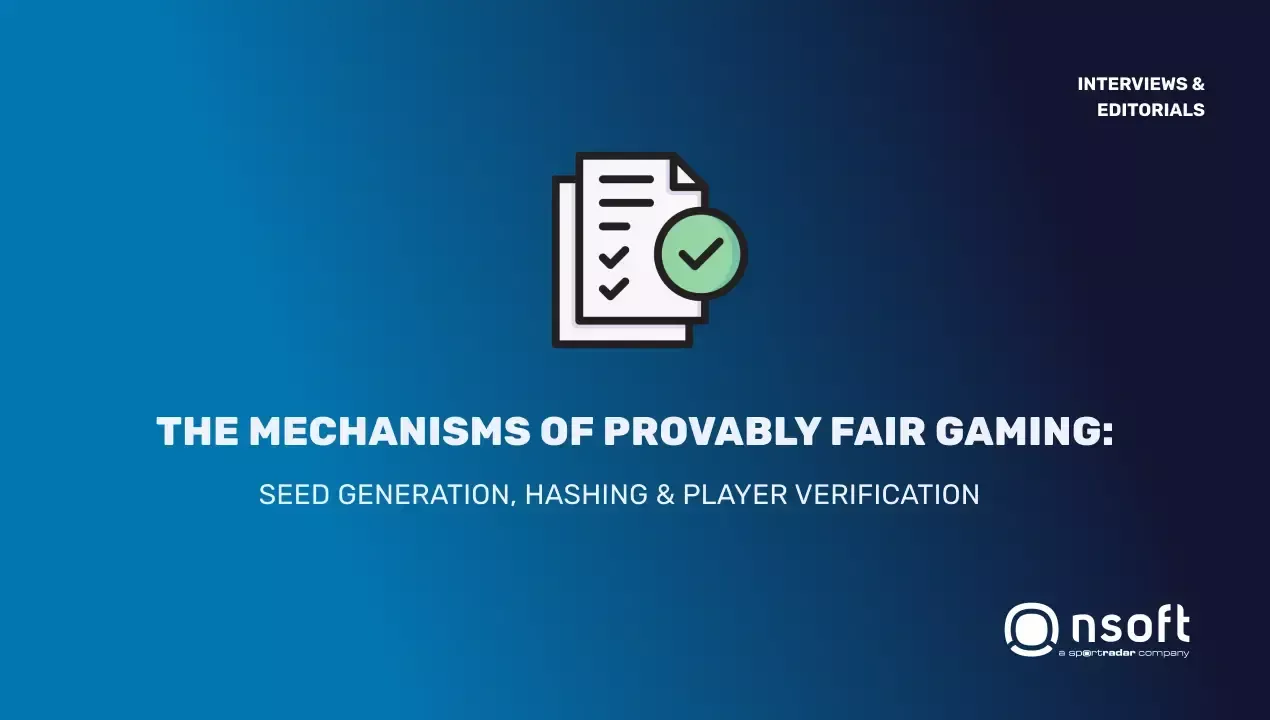Interviews & Editorials
Everything You Need to Know About Provably Fair Technology

Bitcoin and blockchain swooped into the scene in the late 2000s and brought the idea of a decentralized ledger. This wasn't just a big deal for finance back then; the iGaming industry was watching, too. Online casino developers, who were constantly dealing with players' worries about rigged games, had a lightbulb moment – why not use blockchain's open and verifiable features to reassure players? And provably fair was born – a trusty system that lets users know they're getting a fair shake in online games.
Wait, Is It the Same Thing as RNG? #
RNG (Random Number Generator) and PF are not the same. RNG is the classic approach to creating randomness in games—using complex algorithms to generate unpredictable results (I go into more details about RNG here). It's a closed system; players have to trust the game's fairness without seeing its inner workings. That is why we, as game providers, go to great lengths to ensure our RNG setups are tested and stamped with approval.
Provably fair, on the other hand, is RNG's transparent cousin. It still uses randomness, but it adds a layer of transparency where players can check that fairness for themselves. It’s almost like every game outcome comes with a receipt, showing how the result was calculated, allowing everyone to verify it independently.
The Nuts and Bolts of Provably Fair Technology #

PF is essentially a trust pact between the game provider and the player, guaranteeing that every game's outcome is fair and verifiable. It uses smart math and cryptography (fancy term for secure communication) to make this happen. Let’s walk through the process.
Seed generation: Every game begins with a cryptographic seed generated by the game server. It's random and created using heavy-duty algorithms like SHA256 (turns any input into a unique 256-bit hash value, often looking like a 64-digit hexadecimal number) to make sure it’s truly random and secure.
Hashing the seed: Next up, this seed gets hashed, which is tech-speak for turning it into a string of characters that looks nothing like the original number. This step locks in the game's outcome—much like a wax seal on an envelope—and shares this hash with the player as proof of the game's integrity.
Mix and match: Here's where the player steps in. Their input is combined with the server's seed. This combo determines the outcome of the game and is secured by HMAC (hash-based message authentication code) and SHA512 (a cryptographic function that generates a 512-bit hash) to make it tamper-proof.
Checking the math: Once the game ends, the server reveals the original seed. Players can then cross-check it with the hash they received earlier to ensure the game's fairness. While most platforms offer verification tools, the players can also go the DIY route with third-party hash calculators (though they require some cryptography know-how and may be too complex for “fiat” players). It's worth noting that the methods used to calculate results can vary, like using a modulo operator in Roulette for picking a number, or a unique formula in crash games for a multiplier result.
A Simplified Example: Provably Fair in a Crash Game #
Let’s break it down simply (for a detailed example with code, see my colleague Jadranko Dragoje’s Medium post on the provably fair process):
Step 1: Initially, the server generates a random seed, say "ABC123", and converts it into a hashed version like "efgh7890", shared with the players as proof of integrity.
Step 2: The player, ready for the game round, sets their seed, say "PlayerXYZ", and places a bet on the crash game, deciding when they believe the game will crash.
Step 3: The game merges the server's seed with the player's input. Using these inputs, it calculates the game's result, such as determining a crash point at a 2.5x multiplier.
Step 4: After the game, the server discloses the original seed ("ABC123") and explains the outcome's calculation. The player can verify the game's result using the initial hash, their input, and the revealed seed to ensure everything matches up.
Beyond the basics, some platforms enhance provably fair technology by incorporating blockchain. They store hashes and results on the blockchain, creating a rock-solid record that can't be messed with and giving players the power to double-check game results.
Fairness Challenges in Game Design #

Provably fair system is not a one-size-fits-all solution. Take slot games, for instance. The outcome of a spin isn’t just one number; it’s a matrix of numbers that determine where symbols land on the reels. So, even if a player could crack the code and compare the result to the game hash, they'd still have to figure out if it matches the game's paytable. All of this can be quite complicated.
While the PF algorithm is technically impressive, its real-world use by players is still up in the air, as it’s not exactly beginner-friendly. Yet, there's a growing recognition of its importance, particularly in RNG-based games.
As the conversation about fairness evolves, it's pushing the entire industry to be more open about how games work behind the scenes—which is a win for players who want to know they're investing their time (and possibly money) into a game that plays fair. And for operators? This kind of transparency is not only good ethics; it can also be extremely smart business, establishing trust in a competitive landscape.
Tags:
Related Articles
Interviews & Editorials
22.02.2024.
The Insider's Guide to RTP: Everything You Need to Ace Betting Economics!
Learn what RTP (Return to Player) means, why it's important for player engagement and operator success, and how understanding it can change your business strategy for the better.
Learn more
Interviews & Editorials
07.02.2024.
The Most Popular Roulette Strategies & Their Business Implications
The business behind roulette strategies: see how tactics from Fibonacci to Andrucci shape player engagement, game design, and operator margins in the iGaming landscape.
Learn more
Interviews & Editorials
26.01.2024.
The Unstoppable Rise of Crash Games and Why We Can't Get Enough
The evolution of crash games, from simple graphs to digital artwork. Explore the world of crash-or-cash games and discover why they have become a global iGaming phenomenon.
Learn more
Didn’t Find What You’re Looking For?
Our team will be happy to guide you through our products and services.
Contact us
